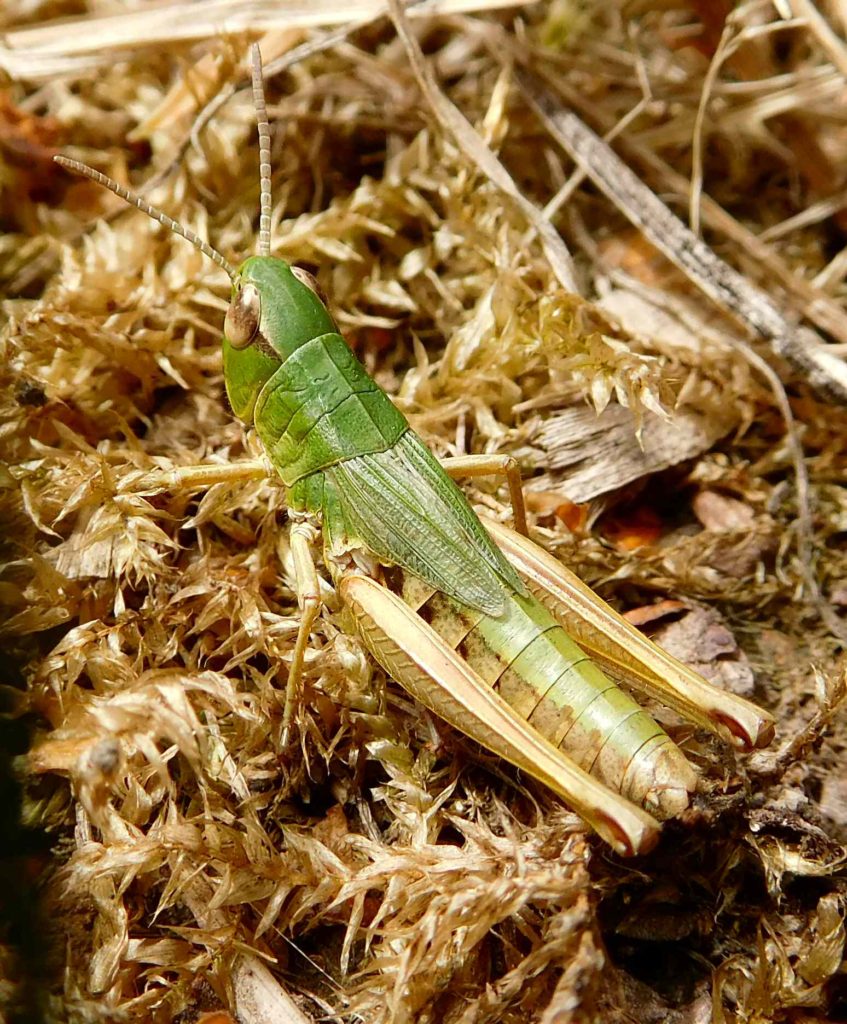
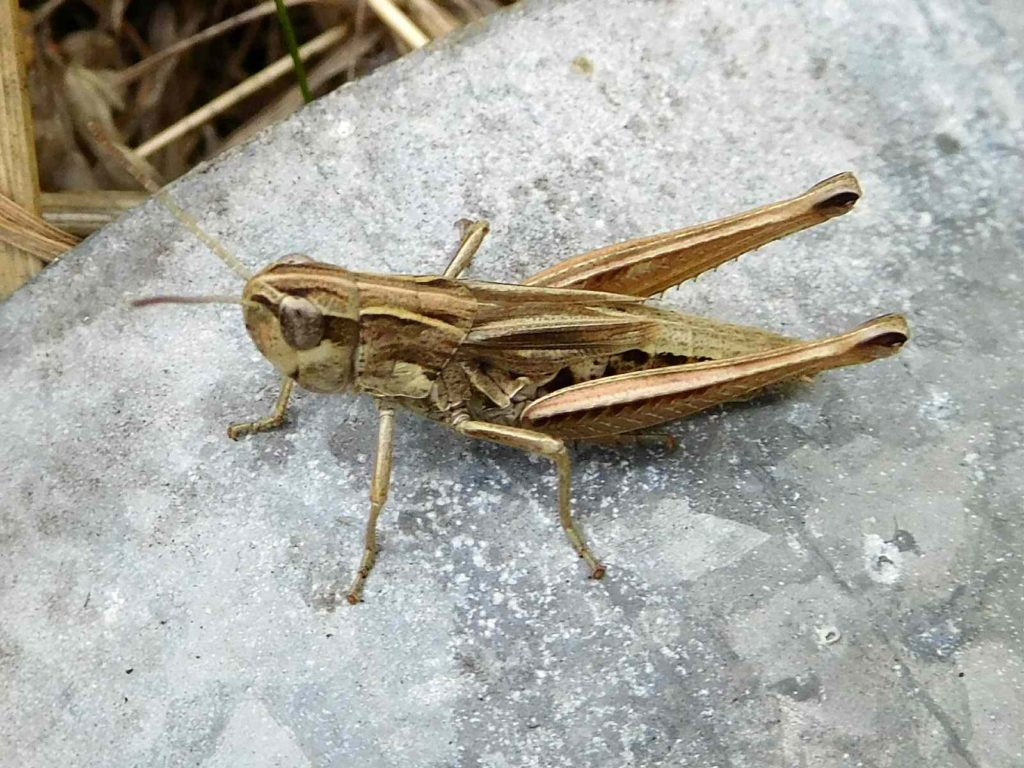
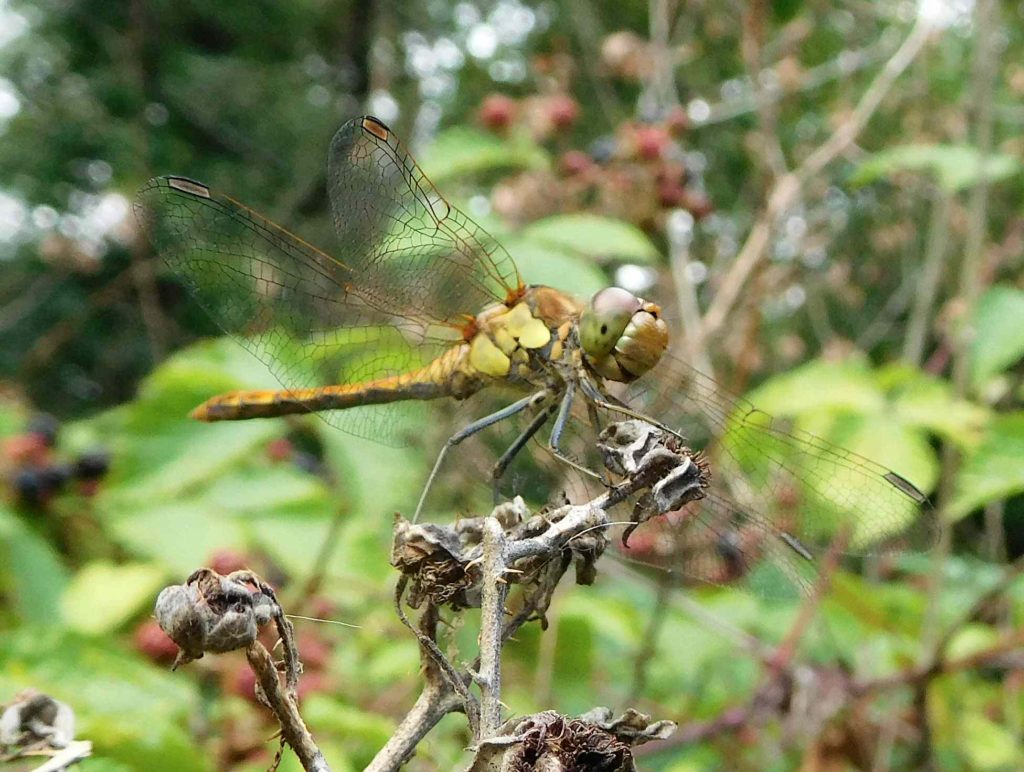
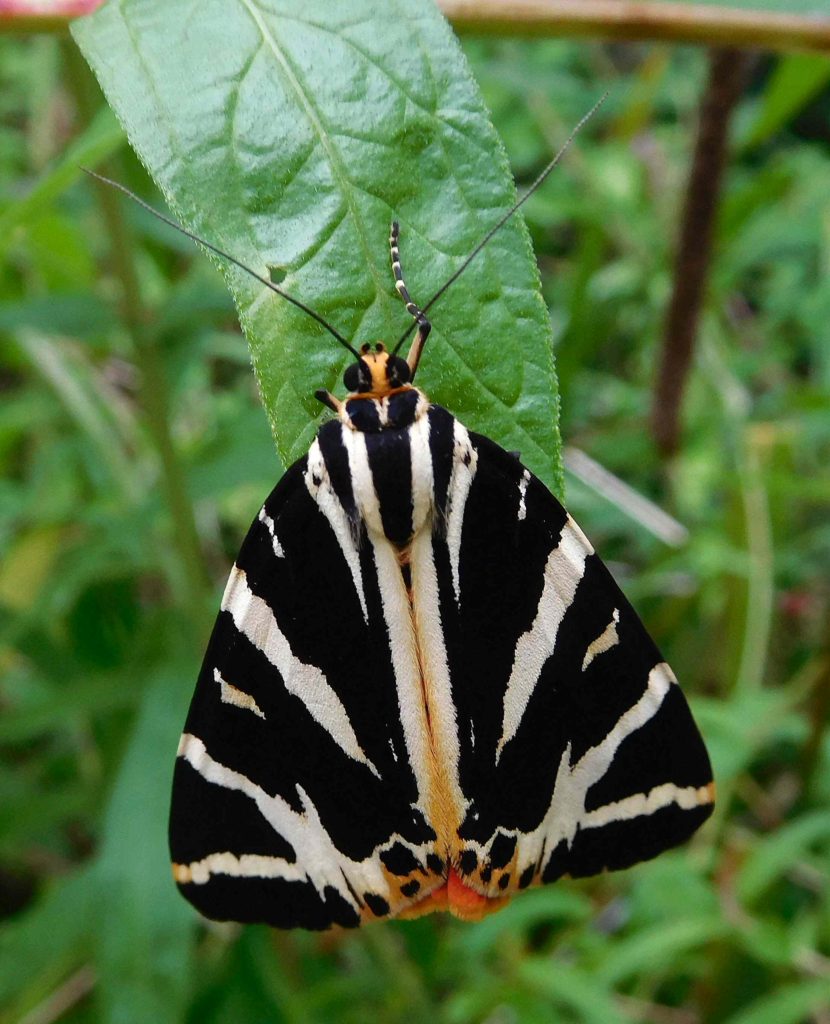




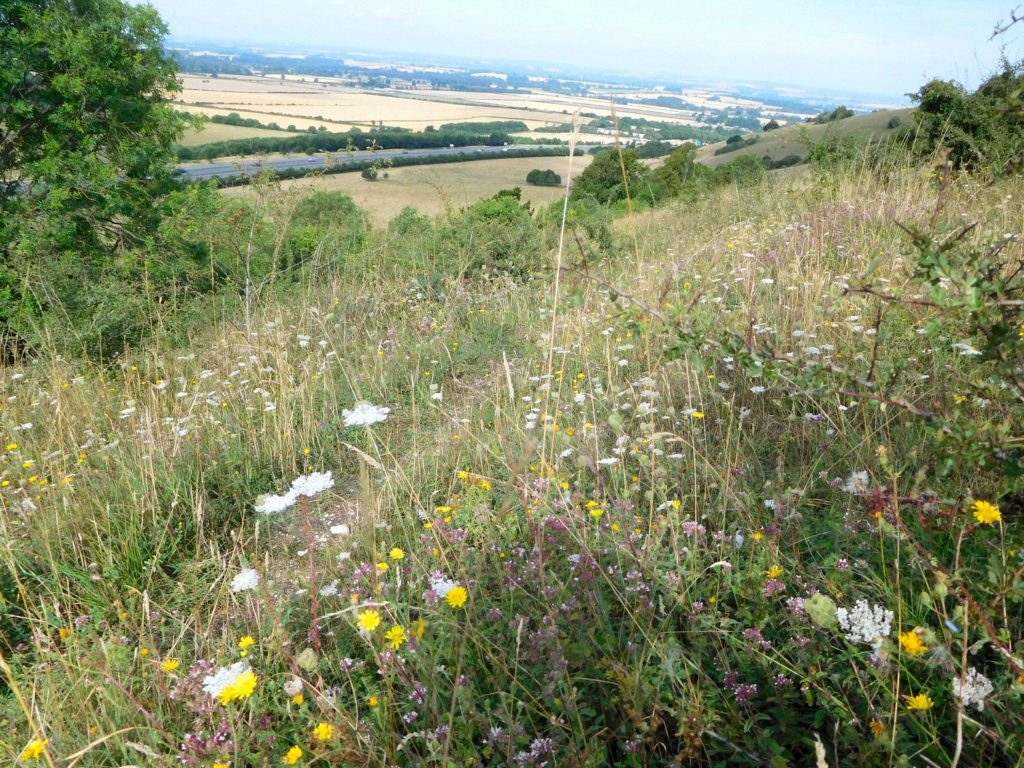

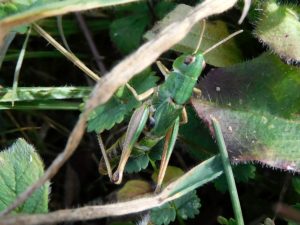
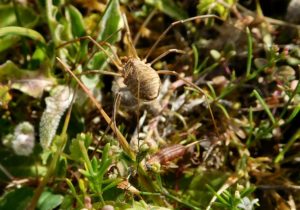
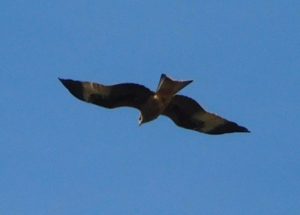
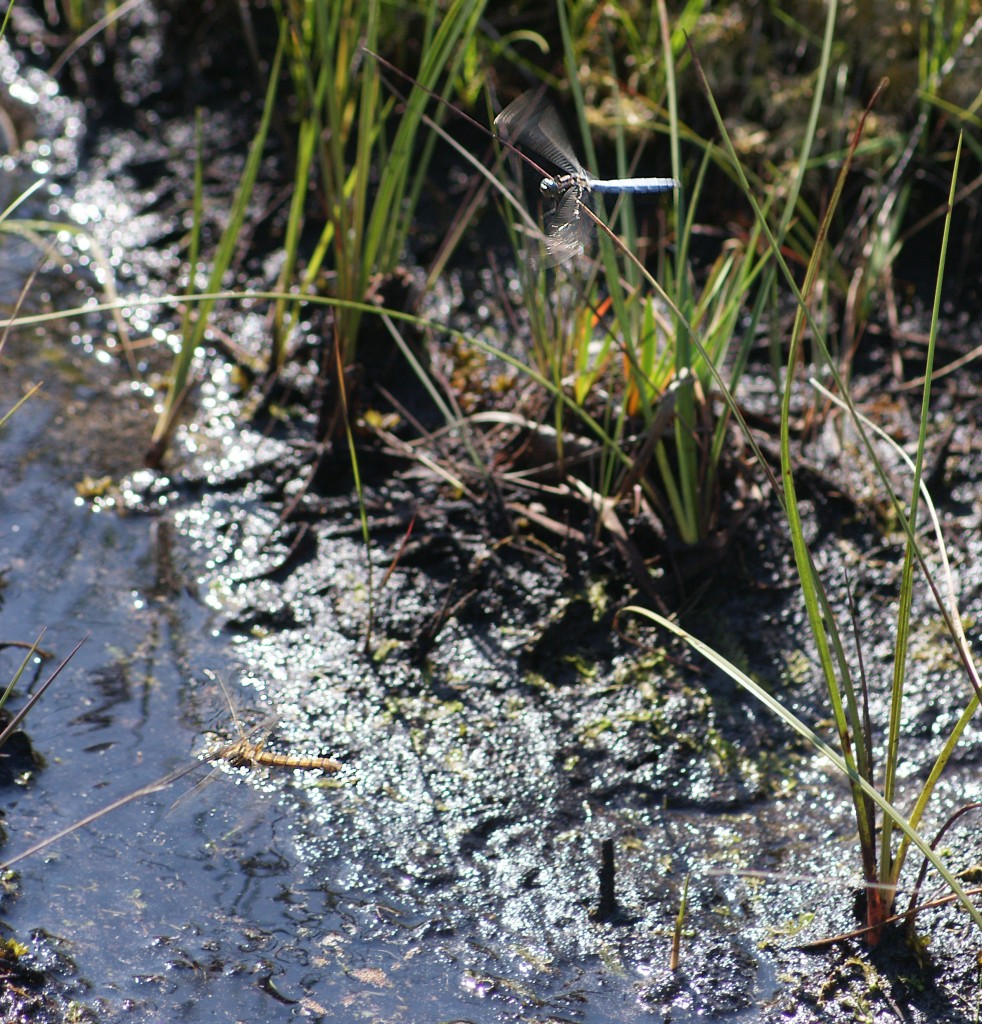
It was suddenly summer again this morning, so I packed cameras, binoculars and a sandwich and went down to Thursley in glittering sunshine. This photo perhaps catches something of the dazzle and sparkle of the bog pools and their shimmering guardians: a pair of Keeled Skimmers (Orthetrum coerulescens) are flying over the water; she is darting down to lay eggs, he is hovering above, guarding her from other males. Their wings sparkle and flash, and it is amazingly difficult to follow, frame, focus and shoot fast enough to get anything like a decent picture. But I rather like the motion blur in this one, and if it’s not perfectly in focus, you know why. I hope you like it too.
I was pleased, too, with this shot of an Emerald Damselfly, the sparkling water behind it forming a pattern of pleasantly out-of-focus circles.
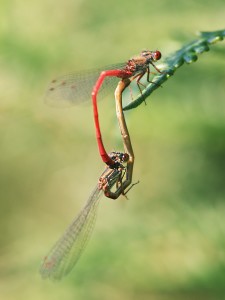
There were quite a few Small Red Damselflies about, mostly single but a few egg-laying pairs; and a modest number of blues, most likely Azures.
Apart from the hundreds of Keeled Skimmers, other dragonflies included Common Darter, Black Darter (I only saw a few females today), Black-Tailed Skimmer (just one), and Southern Hawker.
We saw few butterflies apart from Large Skippers which bustled about flowers near the boardwalk, and little Gatekeepers (I do mean they were smaller than usual) … until we arrived on the amazing Parish Meadow that was once a dump for emptying cesspits. Now it has an ecology strikingly unlike the rest of Thursley Common.
The meadow was full of Meadow Browns, Graylings (mating), Ringlets, Essex Skippers, a Brimstone, Large and Small Whites, and … a Purple Hairstreak (about the Oak trees). The rabbit-bitten pasture, dotted with little flower-stalks of Centaury, was thick with Ragwort, which in turn was richly covered with Cantharid beetles, solitary bees, wasps, and hoverflies and other Diptera. We put up a Silver Y moth which obligingly landed in front of us and perched in the open. We found the traces of a Green Woodpecker killed by a Sparrowhawk; but happily saw a live one in the Oaks nearby.
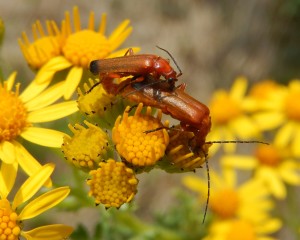
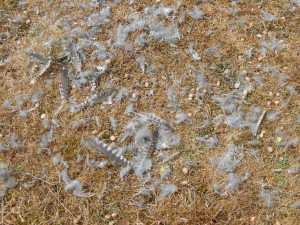
The boardwalks were busy with Lizards and Skimmers sunning themselves.
We met a local group of birders, complete with masses of tripods, telescopes and cameras, and asked if they were looking at the Stonechats. No, they replied, the Hobbies, there are three. We looked up, and sure enough there were three raptors. But in our binoculars, they turned out to be a Kestrel, a Hobby, and a Red Kite! Perhaps there were some more Hobbies somewhere else.
A little way further, absent the birders, we found a dead tree with some juvenile birds perched about it, and a lot of twittering. Yeah, a typical Chiswick Cafe. Some of them were young Redstarts; the others, young Stonechats: pretty confusing. But the Redstarts flew up into a Pine tree – not a Stonechatty thing to do – and sure enough, there was an adult Redstart on a lower branch, plain to see. And a Stonechat adult rasped out its grating call over to the right.
In a group of tall Oaks, we sat and ate a sandwich; and a Spotted Flycatcher flew across and perched on a high dead branch. It spent five minutes looking about, twisting its neck remarkably, but making no sallies. When I was a boy I saw them in the garden every summer; now they’re really something special, like, er, Starlings and House Sparrows.
The sandy heath paths were full of little holes dug by Ammophila Sand-Wasps, and others made by Philanthus Bee-Wolves (or Bee-Killer Wasps). Both are called digger wasps (“Sphecidae”) in most books, and it’s certainly a good name, but the family has been split up, so Philanthus is now in the Crabronidae, which contains most of the old “Sphecidae” (we’ll have to say sensu lato for this); the new Sphecidae (sensu stricto) only contains what used to be the Sphecinae, which includes Ammophila. Rich scope for confusion. Sphex is the ancient Greek word for wasp, and it’s interesting that Linnaeus chose this word for a digger wasp rather than the social wasps, which have the Latin name Vespa for the hornet, and Vespula, little wasp, for common wasps.
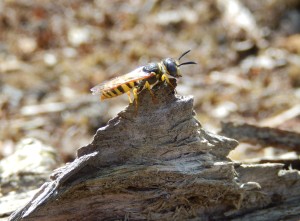
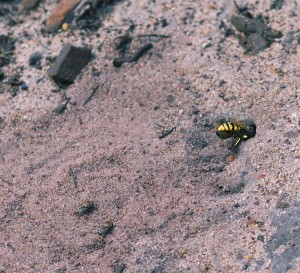
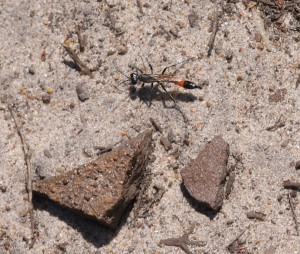
Out of a low bush of willow and gorse right beside a boardwalk came a strange, quiet but insistent squawky chatter of alarm. Peering in between the branches, a small slim dark bird with a long dark tail could be seen hopping about anxiously: a Dartford Warbler. It was extraordinary to be within a few feet of this shy, rare and retiring bird, and watching it for several minutes. There are actually quite a few on the heaths of Surrey and the south coast, but they’re never easy to see—most of my views have been of disappearing rear ends, diving into gorse bushes.